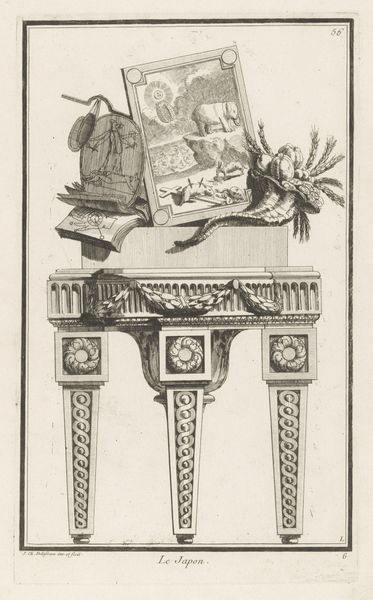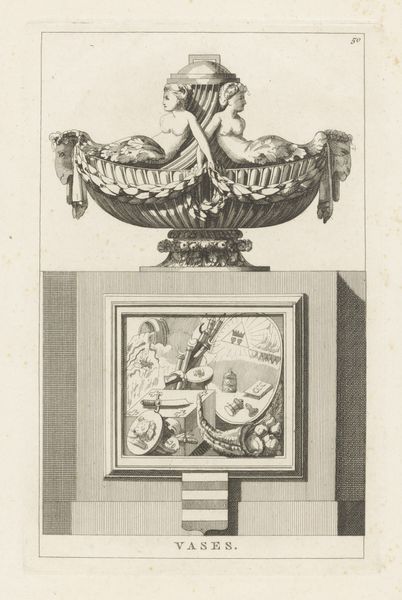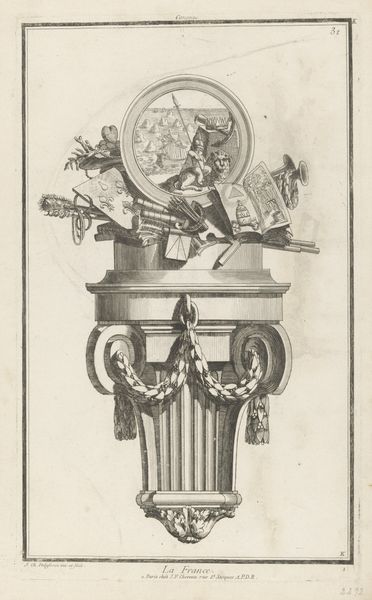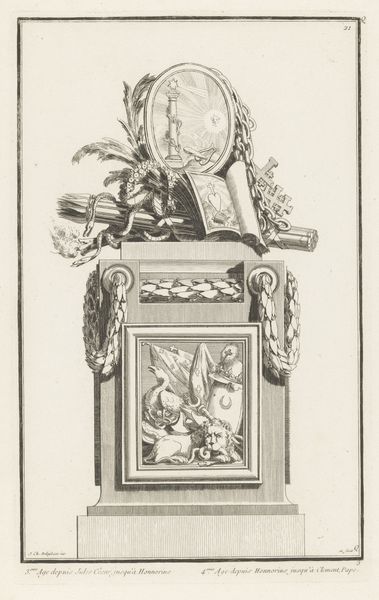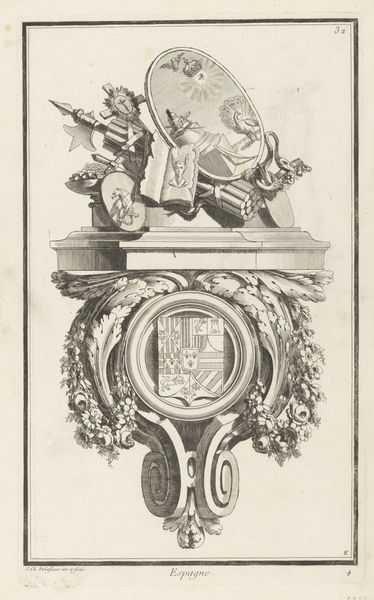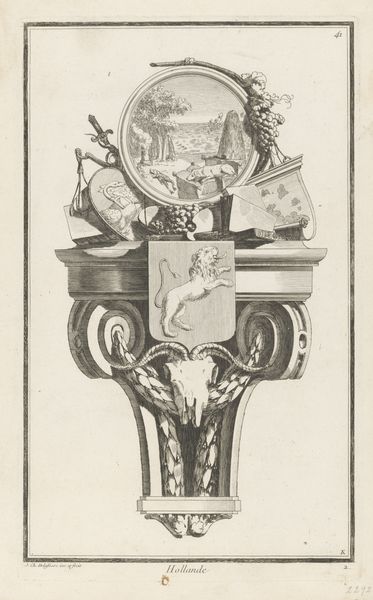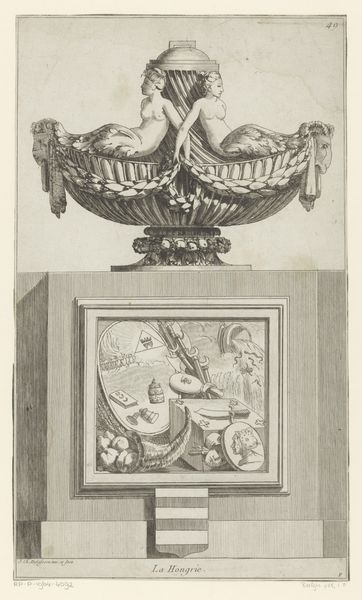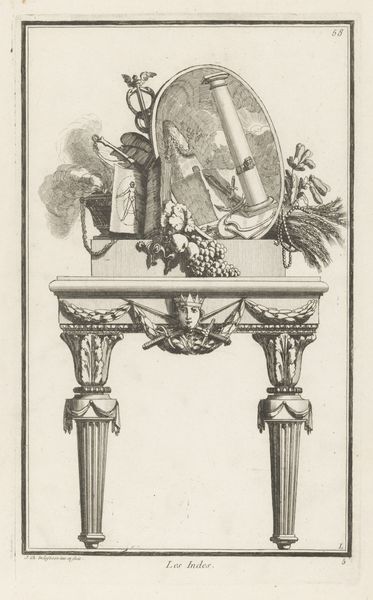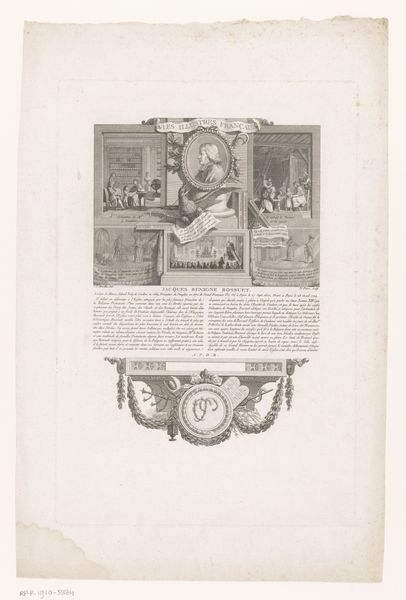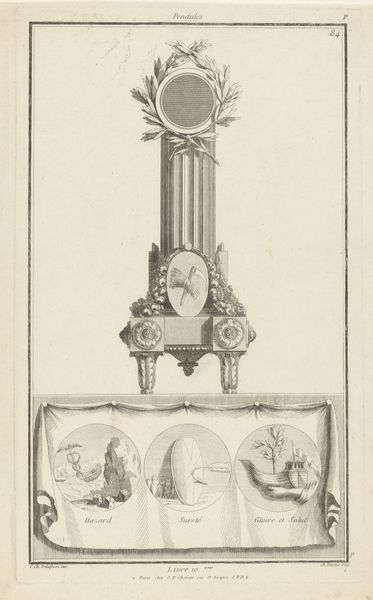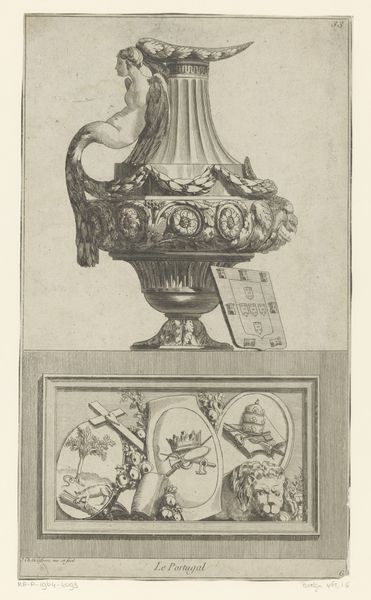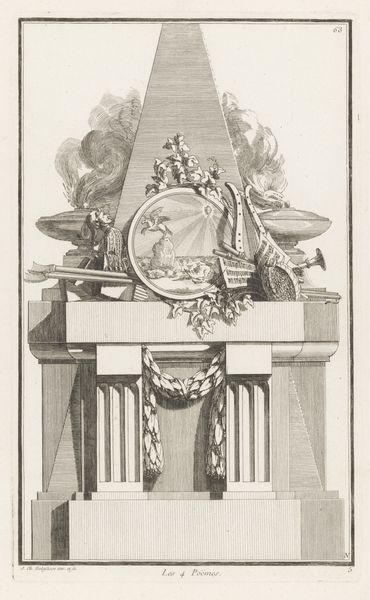
graphic-art, print, engraving, architecture
#
graphic-art
#
neoclacissism
#
allegory
# print
#
old engraving style
#
classical-realism
#
form
#
line
#
decorative-art
#
engraving
#
architecture
Dimensions: height 379 mm, width 229 mm
Copyright: Rijks Museum: Open Domain
Curator: Here we have Jean Charles Delafosse's "Engeland," created between 1768 and 1771. This print, an engraving, is a powerful example of Neoclassical allegory. Editor: My initial reaction? It's… overwhelming. So much visual information packed into a single image. The detail is extraordinary, like peering into a meticulously rendered dream. Curator: Indeed. Delafosse was deeply interested in the decorative arts and the visualization of power. Notice the architectural elements—the ornate pedestal, the classical motifs. They establish a visual language rooted in the grand traditions of empire. This work can be interpreted through lenses such as cultural representation and the history of political iconography. Editor: And layered onto that architectural structure is this collage of symbols: weapons, trophies, a mirror, even a leopard's head. They create an unsettling feeling, as though something is off balance. Perhaps hinting at the costs associated with empire building? Curator: That's a fascinating perspective. It invites us to consider the perspectives and narratives often excluded from traditional art historical analysis, the marginalized voices of colonized populations for example. Consider how this imagery might have been read differently by those subjected to British rule. Editor: I'm intrigued by the framed image at the top – almost like a painting within the engraving. There's a sense of distance created by that choice, a critical lens imposed upon the whole. I agree that Delafosse doesn't appear to shy away from questioning the prevailing social structures of his time. Curator: His strategic deployment of familiar images of power encouraged viewers to grapple with the realties of empire – what does this nation, embodied in its symbols, stand for and at whose expense was it built. Editor: Thinking about the period when Delafosse produced "Engeland," with rising revolutionary sentiment brewing in different parts of the world, I can see his intention was less reverent depiction and more of a complex critique of authority. Curator: Absolutely, this piece transcends mere aesthetic appreciation; it demands engagement with uncomfortable truths. Editor: This certainly gives us a great deal to reflect on about representation, visuality and politics during this key period of history. Curator: It makes you appreciate the artist’s ability to translate powerful social commentary using seemingly formal and academic techniques.
Comments
No comments
Be the first to comment and join the conversation on the ultimate creative platform.
